I am trying to replicate this plot, here:
Here is the source of this plot, slide 89:
http://www.drizopoulos.com/courses/Int/JMwithR_CEN-ISBS_2017.pdf
The top of the plot is the hazard function over time, whereas the bottom green curve is the fitted linear mixed effects model over time.
I have been able to plot both of these separately, however, cannot seem to combine them using either par(mfrow=c(2,1)) or the gridExtra package (because only one is a ggplot object).
I am using the aids and aids.id datasets (as a part of the JM package) in R.
# Load packages JM and lattice
library("JM")
library("lattice")
library("ggplot2")
#Fit models
lmeFit.aids <- lme(CD4 ~ obstime + obstime:drug,
random = ~ obstime | patient, data = aids)
coxFit.aids <- coxph(Surv(Time, death) ~ drug, data = aids.id, x = TRUE)
#Plot longitudinal process
p1<-ggplot(data=aids,aes(x=obstime,y=fitted(lmeFit.aids)))
p1<-p1+geom_smooth(se=FALSE)
p1
#Plot survival process
library(rms)
p2<-psm(Surv(Time,death)~1,data=aids.id)
survplot(p2,what='hazard')
Thank you!

